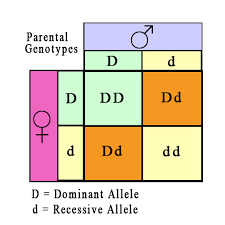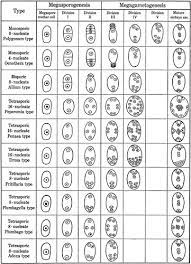parthenocarpy- types, significance, definition
PARTHENOCARPY
Definition:
According to Noll (1902), who introduced the term, parthenocarpy means the development of
fruits without pollination or any other stimulus. Since then the definition of
parthenocarpy has undergone slight modification and, according to the present
concept, it refers to “the formation of fruits without fertilization” (Nitsch,
1965). The parthenocarpic development of fruit may require the pollination
stimulus (stimulative parthenocarpy) or it may occur in unpollinated flowers
(vegetative parthenocarpy)
“seedless fruits” should not be considered synonymous to “parthenocarpic fruits” because in a seedless fruits the ovules may have been fertilized and later aborted, as in some strains of vitis vinfera var. concor (Nitsch et al., 1960) . also, there may be parthenocarpic fruits in citrus sp., grapes, watermelon and pineapples. The seeds in such fruits are really pseudo-seeds, lacking sexual embryo; parthenogenic or adventive embryo may, however, be present.
Types of parthenocarpy:
Nitsch (1963) had recognized
three types of parthenocarpy, namely:
1)
Genetic
2)
Environmental
3)
Chemical Induced
4)
Genetic Engineering
Genetic parthenocarpy:
Many of the plants cultivated
for their fruits show seeded as well as parthenocarpic varieties. This type of
parthenocarpy is known to arise due to mutations or hybridization. The famous navel
orange arose from a normal seeded citrus variety through mutation in an
axillary bud which grew out into a
branch bearing seedless oranges. Besides naval oranges, genetic parthenocarpy
occurs in citrus , cucurbita ,eugenia ,musa ,punica
,and vitis.
Wellington and hawthorn (1929) obtained a parthenocarpic hybrid cucumber by crossing an “ English forcing” Arlington white spine” kihara (1951) developed a method of crossing tetraploids and diploids to produce triploid, parthenocarpic seedless watermelon. The cultivated plantain and banana(musa sp.) are highly sterile polyploid (mainly triploid) plants which develop parthenocarpic fruits. At least three complementary dominant genes control parthenocarpy.
Environmental
parthenocarpy:
Variations in environmental conditions such as fog, frost, and low temperatures, interfere with the normal functioning of sexual organs and bring about parthenocarpy. Campbell (1912) observed that a heavy fog in the month of June caused the formation of seedless olives. Lewis (1942) obtained parthenocarpic pears by exposing the flowers to freezing temperature for 3-19 hours. Cochran (1936) increased fruit setting and obtained parthenocarpic fruits in capsicum by shifting the plants from temperatures of 32⁰-38⁰C to 10⁰-16⁰C at the time of anthesis. Osbrone and went (1953) were able to induce parthenocarpy in tomatoes with low temperatures and high light intensity. Under these conditions pollination is poor.
Chemically induced
parthenocarpy:
Auxins and
gibberellins at low concentrations (about 10-10M) have been successfully used
to induce parthenocarpy in a number of plants which normally bear seeded
fruits. These substances are applied to flowers in the form of a lanolin paste,
or as sprays. The latter is more convenient for commercial purposes.
Balasubramanyam and Rangaswamy (1959)
noted that as a result of artificial pollination most of the varieties of Psidium
guajava developed into seeded fruits but the variety “Allahabad round” yielded
seedless parthenocarpic fruits. In this variety parthenocarpy could also be
induced by treating the emasculated flowers with an aqueous could be duplicated
by the application of indoleacetic acid and indole butyric acid. Other plants
where auxins (IAA, IBA, NAA, NOAA,2,4-D,2,4,5-T) could bring about
parthenocarpic development of fruits include tomato, blackberry, strawberry, figs,
cucurbits, citrus and rosa. Gibberellic acid has been reported to induce
parthenocarpy in a number of rosaceous fruit trees, grapes, figs and tomato.
It has been suggested that for
the induction of parthenocarpy through auxin treatment, the growth substance
should be applied sometime after anthesis because an early application may
damage the flowers and cause seed abortion and consequently, fruit drop. On the
contrary, where gibberellic acid is used for this Purpose it should be applied
as early as possible, preferably at anthesis (Nitsch, 1963)
Recently, Ding et al. (2013) reported the production of parthenocarpic tomato fruits by the application of a cytokinin, 1-(2- chloro-4-pyridyl-3-phenylurea (CPPU). The fruit size was comparable with those induced by GA₃.
Genetically
engineered parthenocarpy:
Genetically engineered parthenocarpy is achieved
through two mechanisms. Either normal development of embryo and seed is blocked
without curtailing fruit development or desired hormone activity is induced in
the desired organ.
By inserting a chimeric gene DefH9-iaam,
Rotino et al. (1997) and Ficcadenti et al. (1999) were able to induce
parthenocarpy in tobacco and several lines of egg plant and tomato. The iaam
gene from psedomonas syringae pv savastanoid increases auxin
synthesis in the tissues and organs of the transgenic plants and the ovule-specific
promoter and regulatory gene DefH9, from Antirrhinum majus, regulates
the expression of iaam only in the ovules without affecting vegetative growth.
The transgenic plants of
eggplant carrying the gene the gene DefH9-iaam produced fruits
with viable seeds when pollinated and parthenocarpic fruits in the absence of
pollination. Thus, in greenhouses where non-transformed plants produce normal
fruits only during summer, the transgenic plants continue to produce fruits
with normal appearance throughout the year which is commercially very
attractive. The parthenocarpic character
was transmitted to the progeny in a mendelian fashion as a dominant trait.
Parthenocarpy offers the possibility of improving fruit quality and productivity in many crop plants grown for their fruits (Spena and Rotino,2001). Parthenocarpy is regarded as the most efficient way to produce fruits under environmental conditions not favourable for pollen production, germination and fertilization. Whereas in plants such as eggplant parthenocarpy can improve fruit quality, in others, such as kiwifruit, it might also improve the productivity because pollinator plants are not required. For many horticulture crops seedlessness of parthenocarpic fruits is a highly desirable trait for their consumption as fresh fruit or for juice and jam industries. On can imagine the annoyance caused by seeds while eating watermelon. Similarly, seedlessness in the table grapes is an important trait meeting the preference of consumers.
Significance
of parthenocarpy:
- The seedless fruits have great significance in horticulture.
- The seedless fruits have great commercial importance.
- Seedless fruits are useful for the preparation of jams, jellies, sauces, fruit drinks etc.
- High proportion of edible part is available in parthenocarpic fruits due to the absence of seeds.
REFERENCE :
THE EMBROLOGY OF ANGISPERMS 6th EDITION Author; SS BHOJWANI, SP BHATNAGAR ,PK DANTU.
https://www.frontiersin.org/articles/10.3389/fpls.2018.01997/full









Comments